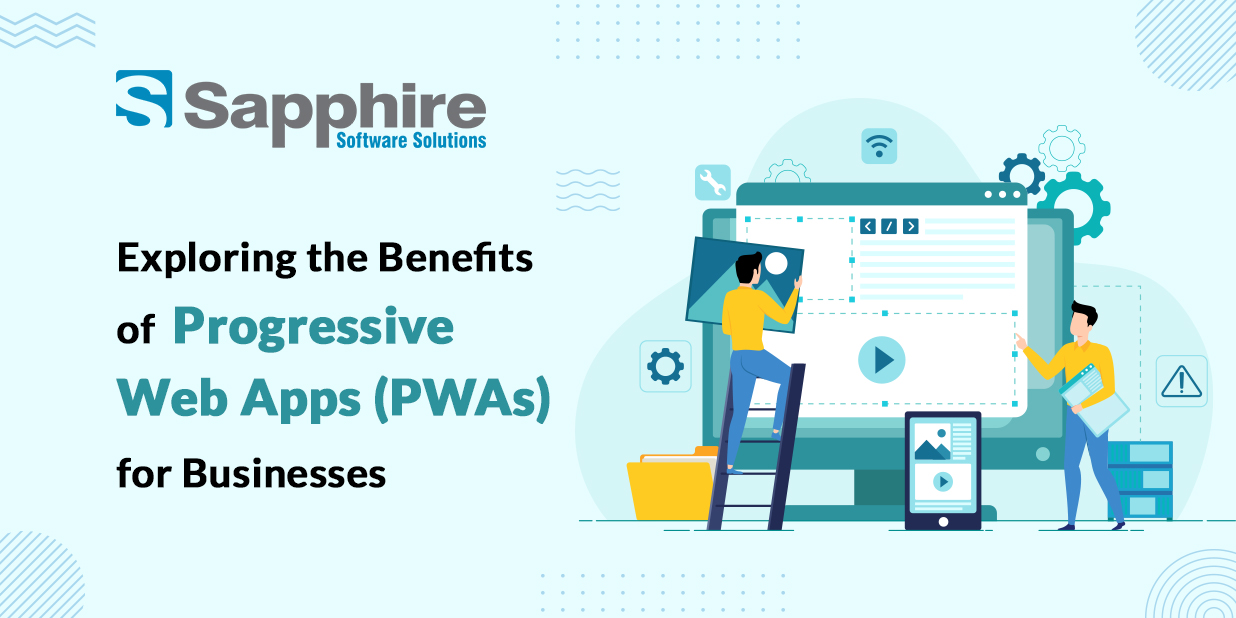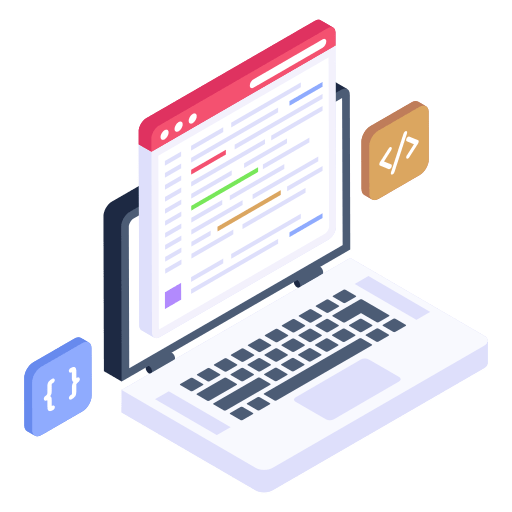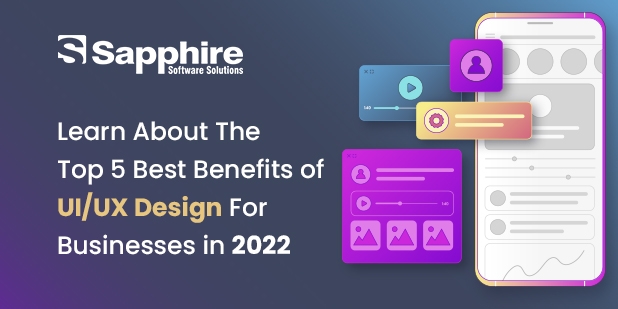What Is a Progressive Web App Google? Why It Matters for Your Business?
Look, we’ve all been there. You’re on your phone, trying to buy something or check a reservation, and the website is crawling. Or worse – “Please download our app to continue.” Yeah, right. Who has the storage space or patience for that anymore?
That’s exactly why Progressive Web Apps (PWAs) have caught fire over the last few years. They’re basically the best of both worlds – website convenience with app-like performance – without the headaches that come with either one. Let’s cut through the tech jargon. A Progressive Web App is basically a souped-up website that acts like an app but doesn’t need to be downloaded from any app store. It loads super-fast, works offline, and can even send you notifications.
The cool part? One PWA works everywhere – iPhones, Androids, desktops, you name it. This isn’t just convenient; it’s a game-changer for businesses tired of maintaining separate websites and apps.
Think about it – instead of building (and constantly updating) different versions for every platform, you build once. Done. That’s a huge money-saver right there. But don’t just take my word for it. When Starbucks rolled out their PWA a while back, they saw orders double on their mobile site. Pinterest’s PWA led to a 60% boost in engagement. These aren’t small improvements – they’re business-transforming results.
Another great example? A mid-sized clothing retailer I worked with was spending nearly $80,000 a year maintaining separate iOS and Android apps, plus their website. After switching to a PWA, they cut that cost by more than half while improving their conversion rate by 23%. Their marketing director told me it was the best tech decision they’d made in five years.
Do Progressive Web Apps Work on iPhones in 2025?
For years, anyone bringing up PWAs would hear the same objection: “But what about progressive web app on iPhones?” Fair question – Apple dragged their feet on supporting PWAs for ages.
That’s changed big time. Since late 2023, Apple’s been steadily improving how PWAs work on iPhones. Not perfect yet, but way better than before. Now iPhone users can add PWAs to their home screens, get notifications, and access content offline. The experience isn’t 100% identical to Android yet, but it’s close enough that businesses don’t need to worry about alienating their Apple-loving customers. A restaurant client recently told me their online ordering PWA now performs almost identically across both iPhone and Android—something that would’ve been unthinkable just a couple years ago. They’re seeing 85% of users successfully completing orders regardless of device type.
Here’s something interesting few people realize: PWAs actually perform better than native apps in some cases on iPhones. Why? Because they don’t face the same memory limitations that installed apps do. A media company found their PWA video player had fewer playback interruptions than their native app because iOS was less likely to purge resources from it during playback. Not something Apple advertises, but a bonus for users!
Top Progressive Web App Builder to Launch Your App Without Coding:-
Here’s something most tech articles won’t admit: you don’t need to be a programming wizard to launch a decent PWA anymore. That might’ve been true in 2020, but things have changed dramatically. Several platforms now let regular folks build PWAs without writing a single line of code:
PWA Builder (Microsoft’s baby) is probably the easiest starting point if you already have a website. It analyzes what you’ve got and handles most of the conversion grunt work automatically. Their diagnostic tool is particularly helpful – it pinpoints exactly what’s keeping your site from being PWA-ready and gives step-by-step fixes.
Progressive Web App Creator tools like Bubble feel more like working in Canva than building an app. Their drag-and-drop editor is surprisingly powerful once you get the hang of it. A local bookstore owner I know launched their PWA in about two weeks using Bubble—with zero technical background. The coolest part? She integrated her existing inventory system in just a few clicks – something that would’ve cost thousands to custom-develop before.
GoodBarber is fantastic for anything content-heavy. A food blogger switched from a native app to a GoodBarber-built PWA and doubled her audience in three months while cutting hosting costs by 70%. Their templates are designed with conversion in mind, which makes a huge difference for anyone trying to monetize content. AppGyver has a bit steeper learning curve but gives you more control if you’re willing to spend time with it. They offer pre-built components that handle complex functions like payments, user authentication, and data visualization – stuff that used to require serious coding chops.
These tools mean the “we can’t afford it” excuse doesn’t really fly anymore. You don’t need a $20,000 development budget to get started with PWAs.
That said, there’s a learning curve with any of these platforms. Set aside at least a couple of weekends to get comfortable before trying to build something for real customers. Most offer free trials, so you can experiment before committing to a subscription.
Choosing Your Development Framework: What the Pros Use:-
For businesses requiring custom PWA solutions beyond what no-code builders can offer, selecting the right development framework makes all the difference.
Modern PWAs are built using various technologies, each with unique strengths:
Progressive Web Apps in Angular remain popular for enterprise-level applications where TypeScript’s strong typing provides stability for large teams. Angular’s built-in PWA support makes implementation straightforward, with many Fortune 500 companies choosing this route for their mission-critical applications. The comprehensive nature of Angular—providing everything from routing to form validation out of the box—makes it ideal for complex PWAs with sophisticated requirements.
Progressive Web App with Vue has gained tremendous traction for businesses looking for something more lightweight than Angular but more structured than vanilla JavaScript. Vue’s gradual learning curve makes it perfect for teams transitioning from traditional web development to PWA implementation. Its performance optimizations make Vue-based PWAs particularly snappy, even on low-end devices. The new Composition API in Vue 3 has made state management in complex PWA scenarios much more intuitive.
Progressive Web Apps React Native might sound contradictory since React Native typically builds native apps, but companies are increasingly using React Native Web to create cross-platform experiences that share code between their PWA and native applications. This approach is particularly valuable for businesses that need both a PWA and native apps, reducing development overhead by up to 70%.
Progressive Web Apps Flutter represents an emerging trend where Google’s UI toolkit, originally focused on native apps, is now being used for web applications through Flutter for Web. The pixel-perfect consistency across platforms makes Flutter an intriguing option for brands where visual identity is paramount. Early adopters report that Flutter’s hot reload feature has accelerated their PWA development cycles significantly.
For Backend Developers Venturing into the PWA Space:
Progressive Web Apps .NET leverages Microsoft’s robust ecosystem to build enterprise-grade PWAs. The Blazor framework allows C# developers to build interactive PWAs without writing JavaScript. A major insurance company recently rebuilt their customer portal as a .NET-based PWA and saw policy management completion rates improve by 35%, largely due to the offline capabilities.
Progressive Web Apps Laravel combines PHP’s accessibility with modern PWA features. Laravel’s elegant syntax and comprehensive feature set provide a solid foundation for PWA development. E-commerce businesses have found particular success here, with Laravel-based PWAs showing cart abandonment rates 25% lower than their previous solutions.
Progressive Web Apps Python might not be the most conventional choice, but frameworks like Django combined with modern front-end technologies create powerful PWAs with sophisticated backend logic. Data-intensive applications like analytics dashboards and research tools benefit from Python’s data processing capabilities while delivering a seamless PWA experience to users.
If you’re checking out the progressive web app list of major companies using these technologies, you’ll find household names across all these frameworks. The right choice depends more on your team’s expertise and specific requirements than any absolute technical advantage.
Proven Progressive Web App Benefits for your Project:-
Let’s talk about why people use (and keep using) PWAs instead of regular websites:
1. Speed That Doesn’t Make You Wait:
Nothing kills online interest faster than waiting. PWAs use some clever behind-the-scenes tricks to load almost instantly, even on spotty connections. When a tourism site in Spain converted to a PWA, visitors went from spending an average of 2 minutes on site to nearly 8 minutes. Why? Because nothing was making them wait or frustrating them into leaving.
The speed difference isn’t just nice to have – it directly impacts your bottom line. Research shows that for every second your mobile site takes to load; you lose roughly 20% of visitors. Think about that for a second (no pun intended). If your site takes 5 seconds to load, you’ve potentially lost 60-80% of your visitors before they even see your content! PWAs typically cut load times to under 2 seconds, even on 3G connections.
2. They Work When the Internet Doesn’t:
We all pretend we have perfect internet everywhere, but we don’t. PWAs can work offline or in those annoying “almost no signal” situations. A hiking app PWA lets users download trail maps before heading out, then access them with no service at all – something that’s literally been a lifesaver in remote areas.
This offline capability isn’t just for obvious use cases like maps. An auction company built a PWA that lets bidders pre-load auction items and place bids that queue up and submit automatically once connectivity returns. Their bidder participation increased 34% after launching this feature because people could participate from locations with spotty service.
Even for everyday businesses, offline capabilities reduce frustration. A dental office PWA lets patients fill out forms in the waiting room regardless of whether the office WiFi is cooperating. The forms sync to their system once connection is restored. Small touch, but patients love not having to start over if the connection drops.
3. No App Store Headaches:
Getting an app approved in Apple’s App Store can take weeks, and updates are just as bad. With PWAs, you update once and everyone gets the new version immediately. No waiting, no review process, no begging users to update.
This isn’t just convenient – it can be business-critical. A retail client needed to quickly update their return policy during the holiday rush due to shipping carrier issues. With their PWA, the change went live within minutes. Their competitor, relying on a native app, had to wait three days for Apple to approve their update. Guess which company avoided a customer service nightmare?
4. They Feel Like “Real” Apps:
Users can add PWAs to their home screens with proper icons, splash screens, and full-screen experiences. Most people can’t tell the difference between a well-made PWA and a native app anymore.
A financial services company found that 78% of their users who added their PWA to their home screen checked their accounts at least 3 times more frequently than their regular mobile web users. That kind of engagement is gold.
The “add to home screen” feature has another hidden benefit: permanence. Once users add your PWA to their home screen, you’ve earned valuable real estate on their device. You’re no longer competing with other browser tabs or bookmarks – you’re now alongside their most-used apps. This translates to higher retention and repeat visits.
Human Side: Real Users, Real Benefits:-
Beyond the technical advantages, PWAs solve real human problems. A community college found that many of their students had limited data plans and older phones with minimal storage. Their PWA allowed students to access course materials, check grades, and communicate with professors while using 70% less data than their previous mobile site. Enrollment in online courses increased 28% the semester after launch.
Similarly, a rural healthcare provider built a PWA that allows patients to download their medical information and treatment plans at home (with good WiFi) before heading back to areas with poor connectivity. Patients reported following their treatment plans more consistently because they could access instructions anytime.
These examples highlight an important point: PWAs aren’t just about convenience or cost savings – they can actually expand access to services for underserved populations.
Key Features of Progressive Web Apps Technologies You Can’t Ignore in 2025:-
Okay, let’s touch on the tech aspects without going full nerd. PWAs work because of three main technologies:
Service Workers operate like dedicated assistants running in the background of your device. They’re what make offline features possible by storing important stuff locally on your phone. They can also pre-fetch content you’re likely to need next, making navigation feel instant.
Web App Manifest is basically an instruction manual that tells your phone how to display the PWA when installed—icons, colors, orientation, all that visual stuff. Getting this right is crucial for making users feel like they’re using a “real” app.
Push APIs let the PWA send notifications to your device, similar to how regular apps do it. These are particularly powerful for re-engagement – a well-timed notification can bring users back days or weeks after their last visit.
Cache API works alongside service workers to store resources locally. This is what allows PWAs to load instantly on repeat visits and work offline. Smart caching strategies can dramatically reduce data usage – important for users with limited data plans. These technologies aren’t new anymore—they’re stable, reliable, and well-supported across browsers. Even Safari (Apple’s browser) is finally playing nice with them.
How to Build a Progressive Web App with WordPress?
Already have a WordPress site? You’re halfway there already. Converting a WordPress site to a PWA is surprisingly straightforward thanks to plugins like SuperPWA and PWA for WP & AMP. Install one, tweak a few settings, and you’ve got most PWA functionality working within an hour.
Progressive Web Apps WordPress integration represents one of the most accessible entry points to PWA technology for small businesses. With WordPress Development Company powering nearly 40% of the web, these plugins bridge the gap between traditional websites and modern PWAs without requiring a complete rebuild.
A small law firm recently converted their WordPress site to a PWA in an afternoon. Their mobile bounce rate dropped 40% within a week, and clients started using their site to upload documents even when they had poor connectivity in courthouses—something that was impossible before.
key things to focus on with WordPress PWAs:-
- Make sure your theme is mobile-responsive to begin with
- Don’t go crazy with plugins (they slow things down)
- Set up proper caching for offline functionality
- Test on multiple devices before going live
WordPress PWAs do have some limitations compared to custom-built ones. Complex interactive features or specialized functions might require additional development. But for content-focused sites, blogs, and basic business sites, WordPress plugins offer a remarkably effective shortcut.
Pro tip: If your WordPress site uses WooCommerce for e-commerce, look into PWA plugins specifically designed for WooCommerce. These include specialized features for product catalogs and checkout processes that general PWA plugins might miss.
How a Progressive Web App Development Company Can Help You Improve User Engagement and Boost Conversions?
Let’s be real—some businesses need more than what DIY tools can offer. If you’re in ecommerce with thousands of products, or you’re managing complex user accounts, or integrating with existing business systems, you might need professional help.
Progressive web app development services vary widely in scope and quality. A good PWA development partner doesn’t just code—they should understand your business goals first. Technology is just a means to an end, after all.
When shopping for a progressive web app development company, look for:
- Specific PWA experience (not just general web development)
- Case studies with actual metrics (not just pretty screenshots)
- Knowledge of both performance optimization and user experience design
- A process that includes thorough cross-device testing
Yes, custom development costs more upfront. But the long-term savings from unified development (versus maintaining separate websites and apps) usually covers that investment within 12-18 months.
Watch out for agencies that treat PWAs as an afterthought or just another website project. PWA development requires specific expertise in JavaScript frameworks, service worker implementation, and performance optimization. Ask potential partners which PWA projects they’ve completed recently and what measurable improvements those projects delivered.
Another red flag? Developers who can’t clearly explain their testing process. Good PWAs need to be tested across multiple devices, browsers, and network conditions. If they don’t mention testing under poor network conditions or on older devices, they’re probably not experienced with PWA requirements.
Google’s Role in PWA Evolution:
It’s impossible to discuss PWAs without acknowledging Google’s pivotal role in their development and promotion. Progressive web app Google initiatives have been the driving force behind PWA adoption since the concept was first introduced by Google engineer Alex Russell in 2015.
Google has consistently championed PWAs through:-
- Development of Lighthouse, an open-source tool that audits PWAs for performance and best practices
- Integration of PWA signals into search ranking algorithms
- Creation of educational resources through web.dev and developers.google.com
- Promotion of PWA success stories through case studies
The Chrome team continues to push PWA capabilities forward, regularly adding features that bring PWAs closer to native app functionality. Their work has pressured other browser vendors, including Apple, to improve their PWA support.
For businesses considering PWA implementation, Google’s Lighthouse tool should be your first stop. This built-in Chrome feature provides a comprehensive assessment of your site’s PWA readiness, performance, accessibility, and best practices—complete with actionable recommendations for improvement.
Why Partnering with a Sapphire is the Smartest Move for Progressive Web App Development Service?
Too many developers get caught up in showing off the latest tech tricks rather than focusing on what actually drives business results. Sapphire starts by understanding your users and business model before recommending technical solutions.
They’re also refreshingly honest about when a PWA might NOT be the right solution. I’ve seen them talk clients out of features that would look cool but wouldn’t actually improve performance or user experience.
Their process involves continuous real-world testing—not just on perfect wifi connections but in elevators, rural areas, and other challenging environments where users are. This attention to real-world conditions means their PWAs perform reliably when it matters most.
What really sets them apart is their post-launch support. PWAs aren’t “set and forget” – they need ongoing optimization based on user behavior and evolving technologies. Sapphire Software Solution’s maintenance packages include regular performance audits and iterative improvements rather than just fixing things when they break.
Common PWA Mistakes (And How to Avoid Them):
Learning from others’ mistakes can save you time and money. Here are some common PWA pitfalls:-
Over-caching content that changes frequently. Yes, caching makes things fast, but cache the wrong things and users see outdated information. Make sure your caching strategy matches your content update frequency.
- Ignoring installation prompts:Many businesses implement the technical PWA features but forget to actively encourage users to add the app to their home screen. Custom installation prompts at the right moment (not immediately on first visit!) can dramatically increase installation rates.
- Going offline-first without need:Just because PWAs can work offline doesn’t mean everything should. Focus offline capabilities on features users actually need when disconnected.
- Notification overload:The ability to send push notifications is powerful but abuse it and users will block you forever. Start with essential notifications only, then gradually expand based on user behavior.
- Forgetting about analytics:Standard Google Analytics doesn’t capture all PWA interactions, especially offline usage. Make sure your analytics implementation includes PWA-specific events and offline tracking.
A travel booking site learned this last point the hard way. Their early analytics showed poor engagement with their PWA until they realized their setup wasn’t counting offline interactions. Once properly tracked, they discovered users were spending 40% more time with certain features than they thought.
PWAs Made Simple: Your Practical Getting-Started Guide:-
Here’s the thing about PWAs—you don’t have to go all-in at once. Many businesses see great results by implementing PWA features incrementally:
- Start by improving basic performance and mobile responsiveness
- Add offline capabilities for key functions
- Implement the “add to home screen” feature
- Roll out push notifications (but use them sparingly!)
- Gradually enhance with more advanced features
A retail chain took this exact approach—starting with just making their product pages load faster and work offline. Just that first step increased mobile conversions by 24% before they added any other PWA features.
The best first move? Run Google’s Lighthouse tool on your current site (it’s free). It’ll show you exactly where you stand and what to fix first for maximum impact.
Don’t think of PWA implementation as an all-or-nothing project. Even implementing a few PWA features can deliver significant improvements. A local news site just focused on making their article pages work offline and load faster – ignoring other PWA features initially. Their reader engagement increased by 31% with just those two improvements.
PWA: Your Gateway to High-Speed Digital Experience
Bottom Line: Why PWAs Matter in 2025:-
Let’s wrap this up. Progressive Web App Development Company is not just a tech trend—they’re a response to how people actually use the internet today:
- We’re impatient (speed matters more than ever)
- We switch between devices constantly
- We hate downloading apps for one-time uses
- We expect things to just work, regardless of connection
The businesses seeing the biggest PWA success aren’t necessarily tech companies. They’re retailers, service providers, media companies, and other “regular” businesses that simply want to remove friction from the customer experience.
When Twitter switched to a PWA, pages-per-session increased by 65%. Trivago saw a 150% increase in people adding their PWA to home screens. These aren’t small improvements—they’re business-transforming shifts in how users engage.
For most businesses, the question isn’t whether to implement PWA features anymore—it’s how quickly you can get started before your competition beats you to it. The best part? The PWA approach aligns perfectly with how search engines evaluate and rank sites. Google explicitly favors fast, mobile-friendly sites in search results. The same optimizations that make your site a good PWA also improve your SEO – a double win that few other technical investments can match.
As we look toward the latter half of 2025 and beyond, PWAs will continue evolving. We’re already seeing integration with device features like bluetooth, USB connections, and augmented reality. The gap between what PWAs and native apps can do is closing rapidly, making the business case even stronger.
So what’s your next move? Whether you’re exploring DIY tools, talking to your WordPress developer, or looking for professional help, the important thing is to start somewhere. Your users—and your bottom line—will thank you.





































